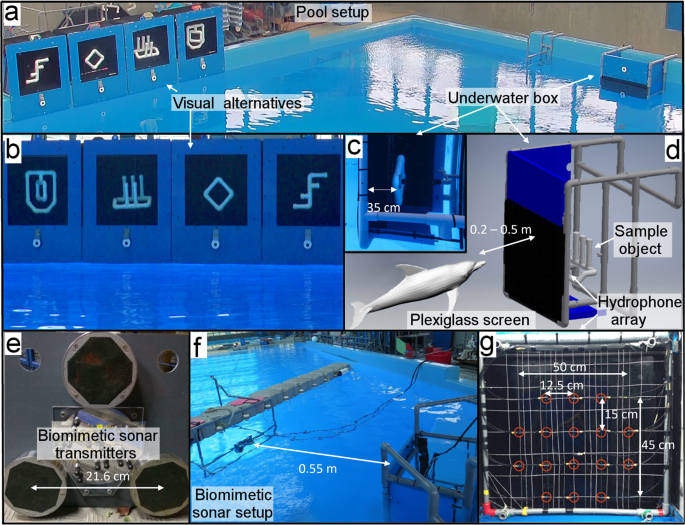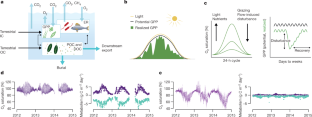スパース性を考慮した画像処理により、水中でのセンシングやナビゲーションに利用可能な高速小型ソナー Operationally fast compact sonar that incorporates sparsity-aware image processing could be used in underwater sensing or navigation
2023-01-19 シンガポール国立大学(NUS)
◆このソナーには、音波の反響をよりよく解釈するために、物体の疎密に関する情報が組み込まれています。この処理方法は、イルカは広帯域の音波パルスとは別に、環境に関する事前情報を使ってエコーを解釈しているという仮説に基づくものです。同規模・同目的の他のソナーと比較して、NUSチームが開発したソナーは、ソナー・イメージの明瞭度、使用するセンサーの数およびセンサーアレイの大きさのトレードオフが優れている。従来の音響エコーの処理方法は、センサーの数が少なすぎたり、分散していたりすると破綻するのが普通でした。しかし、NUSの研究者が開発したソナー処理方法は、そのようなシナリオでも情報を抽出し、なおかつ画像の鮮明さを得ることができる。
◆この研究は、2022年のCommunications Engineering誌に掲載されました。
◆イルカは水中の物体を音響でスキャンし、視覚で一致する物体を選ぶことができることを発見しました。このことから、イルカが物体から発する音の反響には、その物体の形状の情報が含まれていることが分かりました。そこで研究チームは、水中で物体をスキャンする際に発するイルカのエコーを記録した。
◆そして、この観測結果をもとに、イルカのソナーを再現した生体模倣型ソナーを製作した。幅約25cm、イルカの頭くらいの大きさのこのソナーは、イルカのエコーロケーションに似た鋭い衝撃的なクリック音を発するように設計されている。3つの送信機を使い、さまざまな方向から音を送ります。そして、イルカとソナーの両方からの音を処理し、その反響音から物体の形状がどのように見えるかを視覚化したのです。
◆このハードウェアを補完するために、研究チームはソナーのエコーの可視化を向上させる革新的なソフトウェアを開発した。イルカは事前情報を使ってエコーを処理しているという仮説に基づき、研究チームはソナーのソフトウェアに「スパースティ」という概念を取り入れた。これは、スキャンされた空間のうち、対象物が占める割合はごくわずかであると仮定するものです。
◆このソフトウェアの有効性は、イルカが対象物をスキャンする際のソナーエコーと、コンパクトソナーが発するソナー信号の情報を可視化することで実証された。従来の方法では、両方のソナーエコーを処理するため、ノイズの多い画像になってしまう。しかし、この新しい処理方法を用いると、解像度が向上するため、より鮮明な画像を得ることができました。また、このソフトウェアは、ソナーからわずか3回のクリックでビジュアライゼーションを生成することができ、高速な運用を可能にしています。
<関連情報>
- https://news.nus.edu.sg/dolphin-inspired-compact-sonar/
- https://www.nature.com/articles/s44172-022-00010-x
イルカをモチーフにした水中音響イメージングのための小型ソナー A dolphin-inspired compact sonar for underwater acoustic imaging
Hari Vishnu,Matthias Hoffmann-Kuhnt,Mandar Chitre,Abel Ho & Eszter Matrai
Communications Engineering Published:08 June 2022
DOI:https://doi.org/10.1038/s44172-022-00010-x

Abstract
Underwater imaging sonars are widely used for oceanic exploration but are bulky and expensive for some applications. The sonar system of dolphins, which uses sound pulses called clicks to investigate their environment, offers superior shape discrimination capability compared to human-derived imaging sonars of similar size and frequency. In order to gain better understanding of dolphin sonar imaging, we train a dolphin to acoustically interrogate certain objects and match them visually. We record the echoes the dolphin receives and are able to extract object shape information from these recordings. We find that infusing prior information into the processing, specifically the sparsity of the shapes, yields a clearer interpretation of the echoes than conventional signal processing. We subsequently develop a biomimetic sonar system that combines sparsity-aware signal processing with high-frequency broadband click signals similar to that of dolphins, emitted by an array of transmitters. Our findings offer insights and tools towards compact higher resolution sonar imaging technologies.



